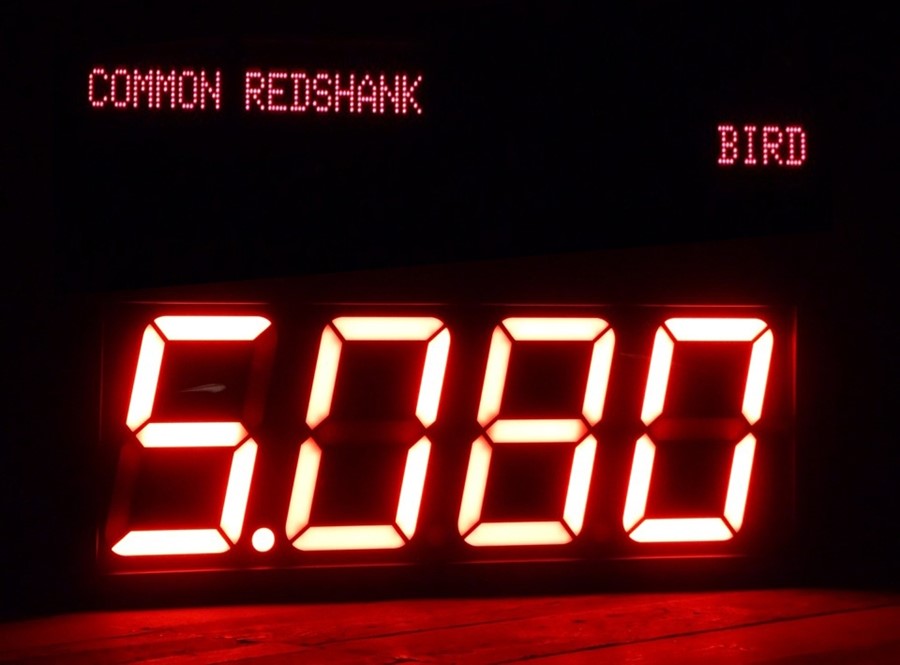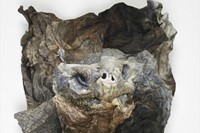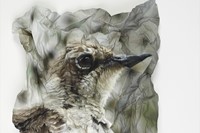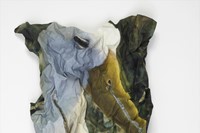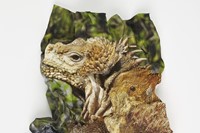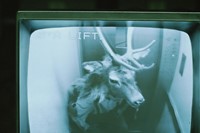Birds become goldfish and babies become men through the sonic stylings of artist Marcus Coates – we ask him how
Artist Marcus Coates has long been interested in the animal kingdom and how we relate to it. Known for shamanic performances in which he descends into the “lower world” to communicate and consult with animal spirits on a range of contemporary questions, or for teaching people to successfully mimic birdsong (he is an enthusiastic ornithologist), or for creasing up otherwise high-gloss portraits of animals, his latest commission unearths the unusual connections between sounds produced by humans and a whole host of species. Using specially designed software, Coates stretched and compressed the sounds produced by starlings, blue whales, seals, children and myriad other creatures to find moments of resemblance between them, tracking these connections in a digital installation. Surprising relationships emerged: a human voice slowed down begins to sound like an alligator, whose noise, when sped up, sounds like a bird; a crying baby, when slowed down, sounds curiously like an adult.
“I wanted to create a line of linkage between humans all the way to as many species as I possibly could,” Coates said. He describes the process as DJing. The project was developed as part of Cape Farewell’s Lovelock Art Commission, which invites an artist to develop a work inspired by the scientist and environmentalist James Lovelock, and is on view at the Museum of Science and Industry in Manchester until the 23rd of November. Here Coates tells AnOther about his sonic discoveries and how we might have more in common with the animal world than we think.
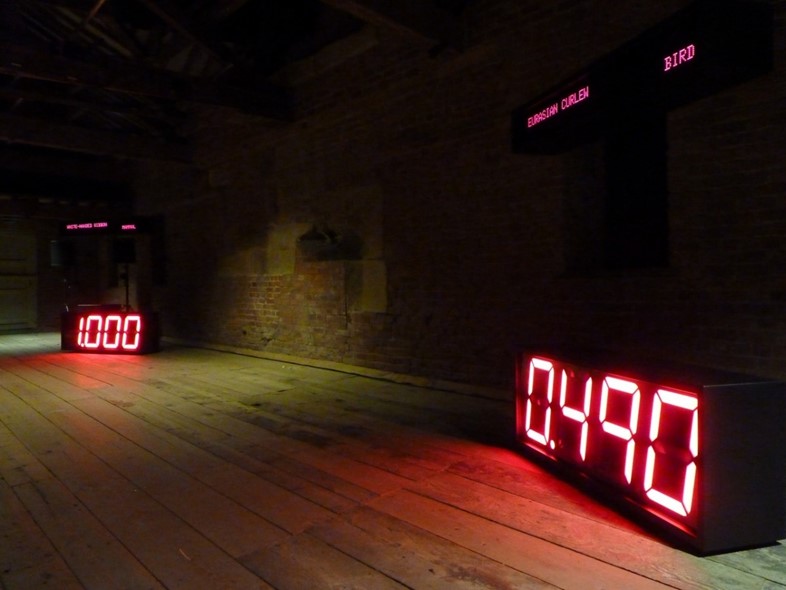
On the similarities of sound...
“If you slow down a human it sounds like a lion or an alligator at 30%, and if you speed that up it starts to sound like a bird. If you speed that up even more it sounds like a goldfish. Speed that even more it starts to sound like an insect. Some amazing things happen so if you speed gibbons up – they start to sound like canaries. Then you start to think, what are these animals doing with this communication, what’s the message they are getting across? Starlings started to sound like children in a playground, very similar to screams and cries and shrieks. And slowing the sound of boys shouting sounded very similar to a red deer rutting. So if you imagine a deer rutting, it’s quite an aggressive thing, and the boys are doing a very similar thing, yelling at each other, showing each other what they are made of.”
"Some amazing things happen so if you speed gibbons up – they start to sound like canaries" — Marcus Coates
On seeing the connections between the species...
“I think we have a very set idea to how we are related to species. We see ourselves as ancestors of chimps. We see certain aspects of our behaviour in other animals, and it almost becomes cliché. But when you start to look at how we use intonation or rhythm in our voice, and you start to think about where that comes from, you can see it in all other animals as well and all sorts of places. It’s quite amazing, it’s a culture, and that’s what I’m trying to describe – the culture of sound making. You see culture outside of humanity.”

On sounds we usually can’t hear...
“All the high ones are like bats and insects and all the low ones are like whales. What I’ve tried to do is incorporate sounds that we can’t actually hear, like the sound made by a blue whale, which is the loudest-sounding animal but something we are not aware of. We can start to hear it when we start to play with the sound and make it physical. Sound is a physical thing, it’s moving air... you start to rethink how you relate to this exotic creature and you get a sense of its scale and its enormity.”
"Sound is a physical thing, it’s moving air" — Marcus Coates
On researching the sounds...
“We were looking at archives from the British library, got stuff from America, Europe, frogs from the Amazon... It was amazing listening to the vast array of animals using the whole planet as one community. The Cornell Laboratory in America has recordings of extinct animals, which are very eerie. We also have some recordings of insects in Britain that are thought to be extinct. But there were so many amazing sounds, and if it didn’t fit in the line then we didn’t use it.”
The Sounds of Others: A Biophonic Line runs as part of the Manchester Science Festival until November 23.
Words by Laura Allsop
